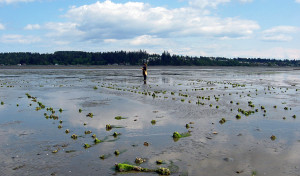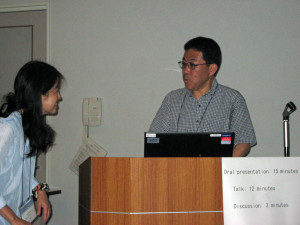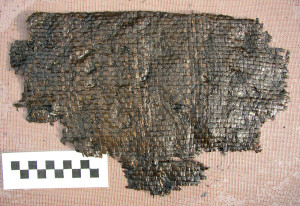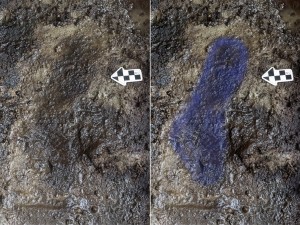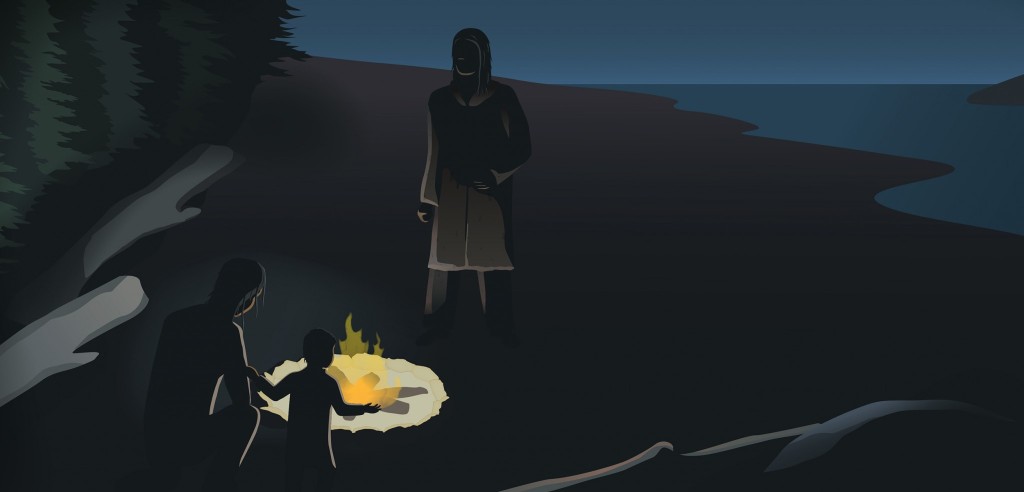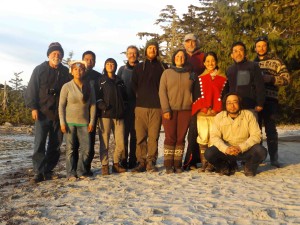By Nancy A. Greene, David C. McGee and Roderick J. Heitzmann
In March of 2010 we announced in NewsWARP the important work on some well preserved and sophisticated wet site fish trap complexes on eastern Vancouver Island, Comox Harbour, Canada. The Canadian researchers have just published a brilliant report on this work in the Canadian Journal of Archaeology, and the CJA Editor, Gary Coupland, gave us permission to make this paper available to the international wet site/wetland archaeologist audience of NewsWARP. Below is the abstract and the paper is linked at the end. Thanks to CJA and the researchers for sharing this great synthesis for all.
Abstract. Results of highly detailed mapping and radiocarbon dating at a vast and largely unknown intertidal fish trap complex indicate a large-scale, technologically sophisticated Aboriginal trap fishery operated at Comox Harbour, Vancouver Island, British Columbia between about 1,300 and 100 years ago. Two temporally and morphologically distinct trap types were utilized, and the shift from the Winged Heart trap type to the Winged Chevron trap type ca. 700 B.P. appears abrupt and closely coincident with Little Ice Age climatic conditions and increased importance of salmon at Aboriginal village sites on west coast Vancouver Island, at Haida Gwaii (Queen Charlotte Islands) and south coast Alaska.
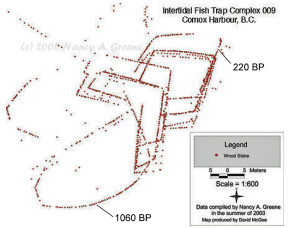 Drawing comparisons from closely analogous historical and contemporary North American large-scale traps designed with knowledge of fish behaviour, the Winged Heart and Winged Chevron traps were likely designed to mass harvest herring and salmon, respectively. This study contributes to the wider consideration of marine adaptation on the Pacific Northwest Coast.
Drawing comparisons from closely analogous historical and contemporary North American large-scale traps designed with knowledge of fish behaviour, the Winged Heart and Winged Chevron traps were likely designed to mass harvest herring and salmon, respectively. This study contributes to the wider consideration of marine adaptation on the Pacific Northwest Coast.
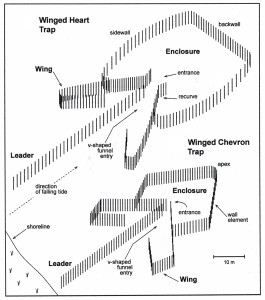 Schematic diagrams of the Winged Heart trap and the Winged Chevron trap types. Each type is a composite built with three components: leader, bilaterally positioned wings and enclosure, arranged along a central line.
Schematic diagrams of the Winged Heart trap and the Winged Chevron trap types. Each type is a composite built with three components: leader, bilaterally positioned wings and enclosure, arranged along a central line.
Please find the full publication of this work at:Â Comox Harbour Fish Trap Complex, British Columbia, Canada
